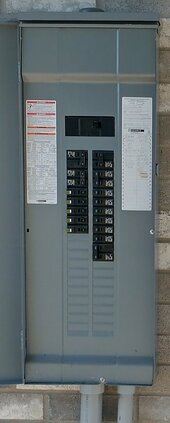Discussing grid tied inverters and AC amps out, Hedges wrote about the 120% rule and breaker choices. Liking the Growatt 11.4 grid tied, 48 amps AC out means an existing 200a breaker needs to be changed.
My meter has three lugs wired to three 200a panels. One 200a panel connects to a 100a sub panel in the future solar building. That wiring is being changed to carry 225a. To meet the 120% rule should I -
Change the 200a main to 225a or 175a? Can a Homeline 200a panel be changed to 225a bolt on main under code? Is the 200a's meter line considered busbar for the 120% multiple? Assuming a 175a main is ok in a 200a panel, this looks the easiest with still enough amps for the addition. 200a x 1.2=240-175=65a for the 11.4's AC out.
Change the 100a sub panel to a new 225a or 175a panel while keeping the 200a main. Or does the 120% rule apply to main or both panels?
Split (tap?) the 200a feed before the 200a main panel, one leg to the panel and the other to the solar building's new panel. Giving the solar building a direct connection, with disconnects, to the meter?
Other options??
My meter has three lugs wired to three 200a panels. One 200a panel connects to a 100a sub panel in the future solar building. That wiring is being changed to carry 225a. To meet the 120% rule should I -
Change the 200a main to 225a or 175a? Can a Homeline 200a panel be changed to 225a bolt on main under code? Is the 200a's meter line considered busbar for the 120% multiple? Assuming a 175a main is ok in a 200a panel, this looks the easiest with still enough amps for the addition. 200a x 1.2=240-175=65a for the 11.4's AC out.
Change the 100a sub panel to a new 225a or 175a panel while keeping the 200a main. Or does the 120% rule apply to main or both panels?
Split (tap?) the 200a feed before the 200a main panel, one leg to the panel and the other to the solar building's new panel. Giving the solar building a direct connection, with disconnects, to the meter?
Other options??



